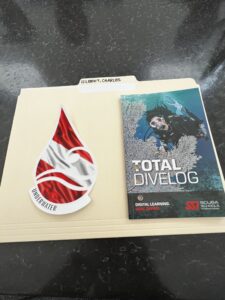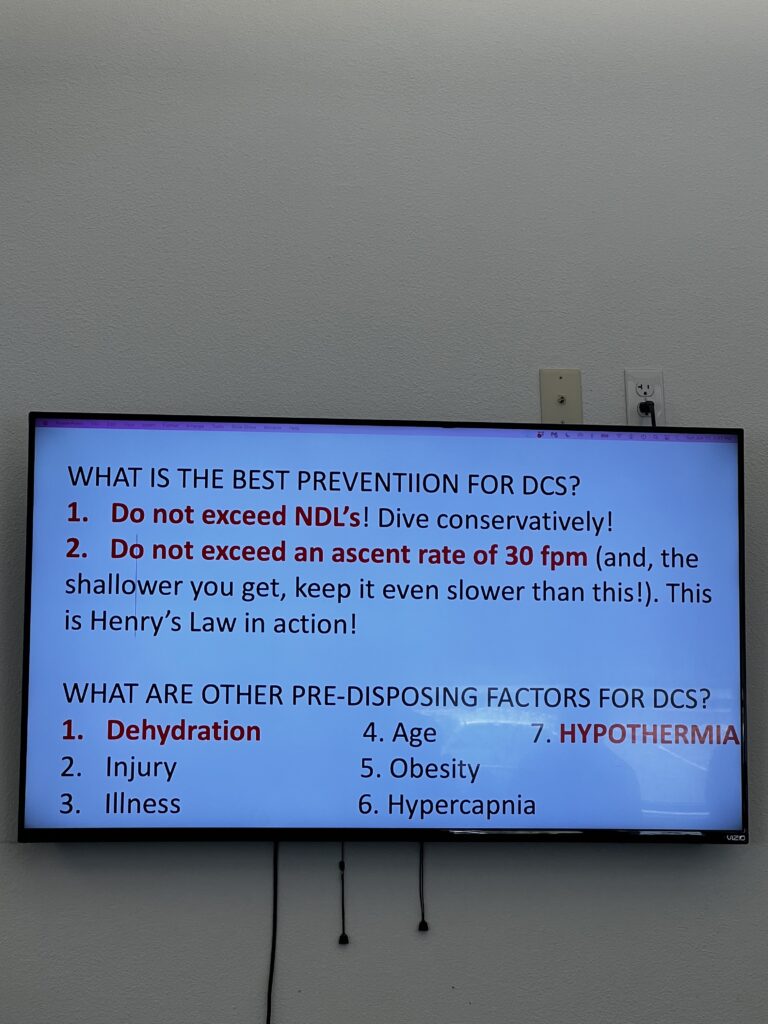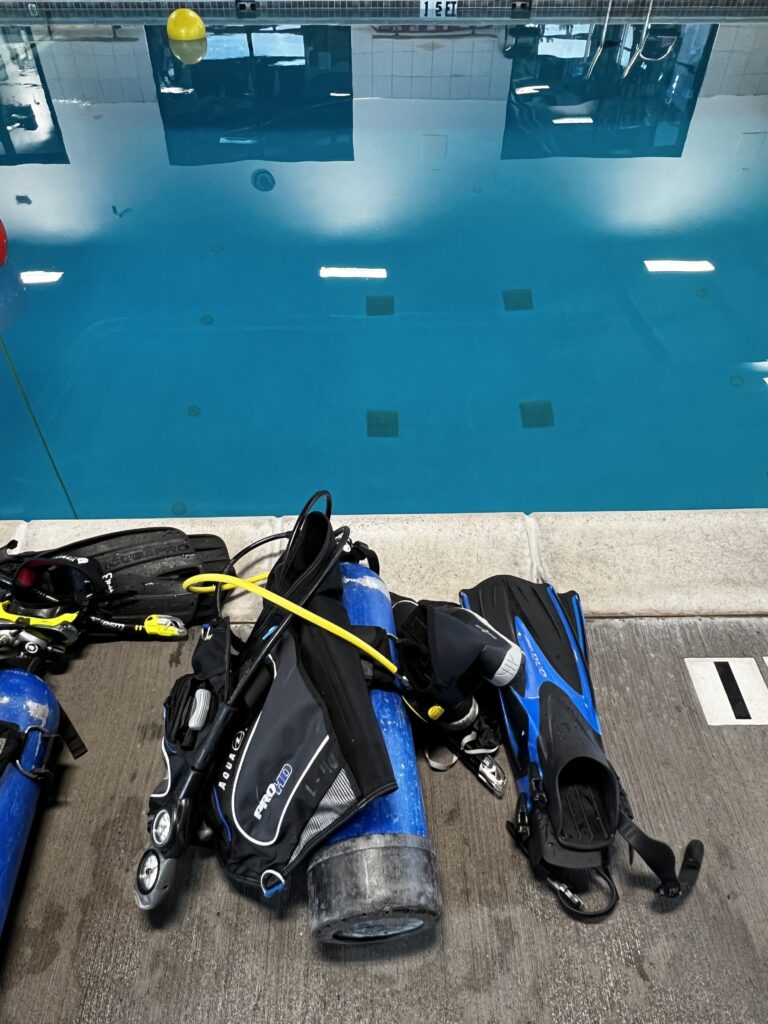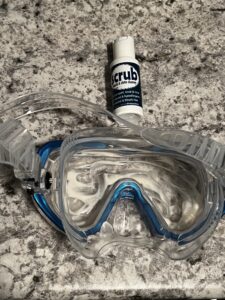Part II | First and Second Days of Class: Pool Sessions
If you haven’t read the first part of this series, follow this link: Before I Started.
“When one man, for whatever reason, has the opportunity to lead an extraordinary life, he has no right to keep it to himself”
― Jacques Cousteau
So, what you do not want to do is be late to your first day of pool sessions. I have a habit of being late to everything I do, which is nice because it has the added benefit of making my girlfriend super annoyed with me. It’s great! I tend to disregard the first part of the “early bird gets the worm” proverb and embrace the latter half of “but the second mouse gets the cheese”. I did make it to my classroom though and after some shuffling to my seat, I quickly started making friends.

The class was small, just 7 people including myself, 8 if you count the instructor. I gotta say, everyone was nice, ages ranged from around 13 years old to mid 60 years old, and it was very comfortable. We started off learning how to connect the Buoyancy Compensator (BC) and regulator hoses to a tank of oxygen. We also were taught how to read the labels on the tank, smell the gas for contaminants, and test that the regulators and BC were working correctly while connected to the tank.
After a few slides regarding Self-Contained Underwater Breathing Apparatus (SCUBA), Decompression Sickness (the bends), Nitrogen Narcosis (getting narced), and the buddy check system (BWRAF) we were allowed a little over an hour to go shopping for our mask, snorkel, fins, and boots, as well as get lunch. If you’re wondering, I had Jimmy Johns!

After lunch it was time to get fitted for our wet suits and BC. I ended up getting a XXL 3 millimeter “shorty”, and an XL BC. So far so good! After getting fitted we were instructed to get in the pool with our wetsuits, fins, mask, and snorkel, as we had to pass a fitness test before the instructor could move onto actual scuba training. The fitness test wasn’t super easy, but it was doable! We had to swim about 5 laps around the perimeter of the pool and then tread water (without fins) for 10 minutes. Let it be clear that I am not in the best shape of my life, and my cardio kinda super sucks. Don’t be nervous, If I can do it, so can you!

After passing the fitness test we were assigned diving buddies. This is where I met Ian, who is now a friend and we are planning future dives with our significant others. After getting acquainted, we were instructed to put on our BC, Regulators, and Tank. Finally, it was time to have some fun! We were all gathered in the shallow end so the instructor could first have us try and get used to using the regulators while putting our heads underwater. The first time breathing through a regulator can be weird! You quickly get used to it though and it wasn’t long before we were learning new scuba skills!
The following are some of the Scuba Skills we learned in the Pool Sessions:
Neutral Buoyancy – You don’t want to be sinking or floating to the surface all over the place
Partial Flood & Mask Clear – If you have a small leak in your mask
Full Flood & Mask Clear – If you have a big leak in your mask
Mask Removal/ Replacement & Clear – If your mask gets kicked off
Controlled Descent – Descending too fast can cause mask, sinus, and inner ear squeeze. Ouch.
Controlled Ascent – Ascending too fast can cause decompression sickness (DCS or “The Bends”)
Out of Air/ Air Share – It’s rare but possible to run out of air while at depth, what do you do?
Out of Air/ Air Share & Ascend – Your buddy is out of air, you get them your regulator, the dive is over, and it is time to ascend in a controlled fashion
Out of Air / No buddy close by – You are out of air at depth, your buddy is not close, what do you do?
Manual BC Inflation – How to inflate your BC at the surface if you’re out of air
Hand Signals for (Something is Wrong / Out of Air / Are You Ok? / I am Ok / Ready to go down/up?
Regulator Retrieval – If your regulator gets kicked out of your mouth
Regulator Clear – Clear the water from the regulator if it leaves your mouth
Weight Pocket Removal and Replacement at Surface & At Depth
Taking Off and Replacing the BC and Tank – At Surface & At Depth
Tired Buddy Tow – How to assist your buddy if they get too tired to swim
How to React to a Distressed Diver at Surface – “Diver inflate your BC!”
What to do if You Lose Your Buddy – Do a 360-degree scan for no more than 10 seconds, then ascend if not found
Underwater Navigation – Follow a heading and then reciprocal at depth
We also learned different types of entry, like the giant stride, the back roll, and the seated entry.
Learning the basics in the pool sessions was exceptionally fun and the time flew by. Before I knew it, it was time for the final exam. Here my nerves began to flare up before the test as they always do, but the instructor did a short review before we started, and it was super easy. 50 questions, some got 100%, and at most 2 questions were missed. Not a single person even came close to failing! After passing the exam we earned what is called a referral certificate. This showed that we had taken the pool sessions and passed the final exam. The experience so far was mind opening, and exhilarating. There’s something about being underwater and yet still being able to breathe, swim around, and explore with ease and comfort.
Between the pool sessions and the open water certification, I focused on scrubbing my new mask!

I will go over finishing my open water certification in this next post.
